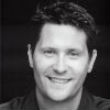 This solar farm in New Bern is one of about 100 solar farms developed by Strata Solar in North Carolina. The state is the second top producer of solar energy after California. Photo: Strata Solar |
NEW BERN — As solar energy has taken a surprising leap nationally, North Carolina is sitting pretty as a top producer, behind California, of utility-scale solar energy in the country. In 2013, the state overtook New Jersey and Arizona with the second largest increase in solar capacity.
Strata Solar, which will complete its farm in New Bern next month, is the No. 1 producer, as far as installed megawatts of solar energy, in North Carolina, with a total of about 100 solar farms.
Supporter Spotlight
But all is not sunny in the solar industry in North Carolina, with dark clouds hovering over the state Utilities Commission, the state legislature, the U.S. Congress and even on the international front.
Solar power, meanwhile, is literally transforming the landscape in North Carolina.
Until a few years ago, farmers leasing 45 acres of land Joe Thomas owns off N.C. 43 outside New Bern harvested cotton, beans and corn. Now, those same acres will be harvesting enough energy from the sun to theoretically power 750 homes and remove 780 cars from the road.
“I think this is a resource for producing electricity that is good,” said Thomas, owner of Thomas Development Co. in New Bern, adding he has heard nothing negative from the community. “I think the construction has gone fine.”
Chapel Hill-based Strata Solar had approached him two or three years ago about leasing the land for a solar farm, and as a businessman, Thomas liked what he heard. The offer included a long-term lease – he declined to provide the details– that provided a bit more income than farmland and would be paid consistently.
Supporter Spotlight
“It’s a good income related to the farm,” Thomas said.
When the 6.4-megawatt project is completed, the land, just north of Bridgeton, will be covered with 22,556 slate-blue photovoltaic modules that will produce at its peak about 10,048 megawatt hours of electricity a year.
The Craven County site is about the same size as most of Strata’s projects that are built on land formerly used to farm. And once the lease is up, the land can be farmed again with minimal evidence of the solar project.
 Blair Schooff |
“We tend to, as a practice, try to do as little grading work as possible,” said Blair Schooff, the company’s vice president of sales and marketing. “We like to be good stewards of the land, primarily.”
Schooff said that Strata, which has started expanding into other states, does not use gravel or cement at their projects, and fencing is minimal.
“We think this is a very good use of land, and farmers who have been active farmers agree with us,” he said. “You can pull all this stuff out of the ground, and be left with what you had before.”
Strata has a trained workforce that moves in teams from job to job in regional clusters, Schooff said, so jobs that are created are not necessarily from the area of the specific project. Last year, there were as many as 1,500 total workers on all the solar farms, he said, averaging about 60 to 90 per project.
Industry-wide, North Carolina last year employed 2,400 people in solar energy jobs, according to N.C. Sustainable Energy Association.
Craven County Manager Jack Veit said that the county has had little to no interaction with Strata – Craven has no zoning — and he is not aware of any specific benefit to the county. On the other hand, he said he has not heard any objection to the solar farm, which is about a 10-minute drive from New Bern, the county seat.
Whatever energy produced at Strata’s farms is sold to Duke Energy or Dominion North Carolina Power, Schooff said.
“Both utilities are fantastic to work with,” he said. “They’re very much embracing the new developments in solar.”
Growth in the solar industry coincided with passage of the state Renewable Energy and Energy Efficiency Portfolio Standard in 2007, said Steve Kalland, executive director of the N.C. Solar Center. It really kicked into high gear about three years ago, he said.
 These 45 acres of farmland in New Bern will be harvesting enough energy from the sun to theoretically power 750 homes and remove 780 cars from the road once the solar farm is completed. Photo: Strata Solar |
The law required that by 2021 large utilities have 12.5 percent of their electric supply produced by clean energy sources.
“North Carolina suddenly became a very good place to do large-scale, utility-scale solar farms,” Kalland said. “The residential side in California is kind of driving the train there.”
An issue with net-metering that is being considered by the N.C. Utilities Commission is relevant in this state not because it would have an effect on the utility-scale solar projects, but because of its future potential, Kalland said.
Net metering allows people with residential roof-top solar to be credited for excess energy backed into the power grid. Because of regulatory strictures, there is very little residential solar power being produced in North Carolina.
From the utility company’s perspective, Kalland said, it’s a loss of revenue that was calculated to cover its infrastructure costs, despite the current miniscule scale of residential solar in the state.
“They’re looking out 30 years,” he said. “They’re worried about it.”
Kalland said that it would benefit the state to have a discussion about regulatory issues that could hinder the future of residential solar power, but it is premature to worry about its immediate impact on North Carolina’s solar industry.
Despite murmurs from legislatures of repealing the state’s renewables standard, Kalland said he is “reasonably” comfortable that it will remain in effect.
“I think the state would be foolish to kill the goose that laid the golden egg,” he said.







